Innovative tool and technology contribute to sand control in NW China
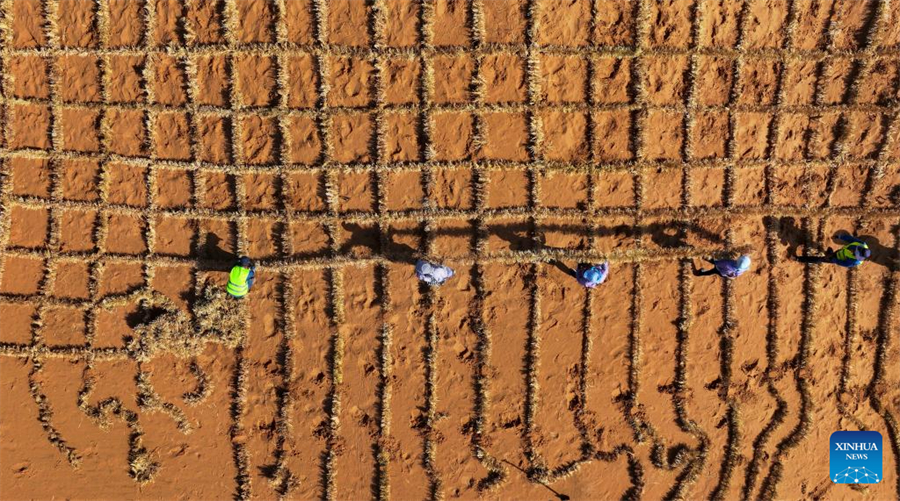
An aerial drone photo taken on May 30, 2024 shows workers paving straw checkerboards in the Tengger Desert, in Zhongwei of northwest China's Ningxia Hui Autonomous Region.
In the 1950s, to protect China's first railway that runs through a desert, the city of Zhongwei embarked on a journey of desert mitigation. Scientists at the Shapotou Desert Research and Experiment Station, part of the Northwest Institute of Eco-Environment and Resources of the Chinese Academy of Sciences, along with local residents, developed straw checkerboards to stabilize the sand and prevent dunes from shifting.
Tang Ximing, a senior engineer at a state-owned forestry farm in Zhongwei, crafted a steel tool that differs from regular shovels by featuring two horizontal bars at the front tip. This innovative tool enables the planting of seedling roots 50 centimeters deep into the moist sand layer. This simple tool increases the survival rate of afforestation by 25 percent to over 85 percent. It has been widely promoted and used in afforestation projects across other regions in northern China.
In 2019, an enhanced version of straw checkerboards that can be mass-produced using machinery was developed, extending the service life of these sand barriers.
Through persistent efforts spanning several decades, Zhongwei has reclaimed 1.5 million mu (about 100,000 hectares) out of its total 1.68 million mu of desert through afforestation. This endeavor has expanded its vegetation coverage from less than 1 percent to 42 percent at present, effectively pushing back the Tengger Desert by 25 kilometers. [Xinhua/Feng Kaihua]
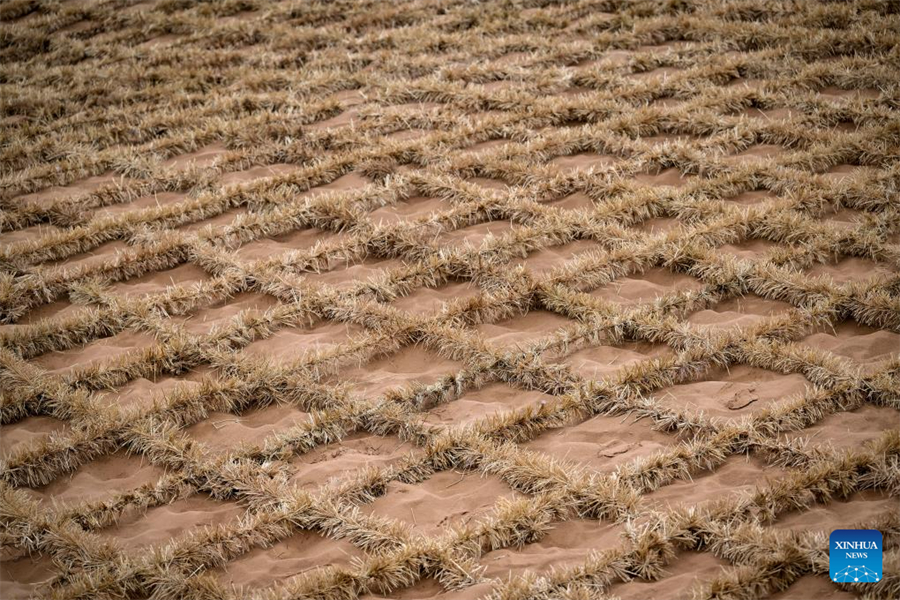
An aerial drone photo taken on May 29, 2024 shows straw checkerboards in the Tengger Desert, northwest China's Ningxia Hui Autonomous Region. [Xinhua/Feng Kaihua]
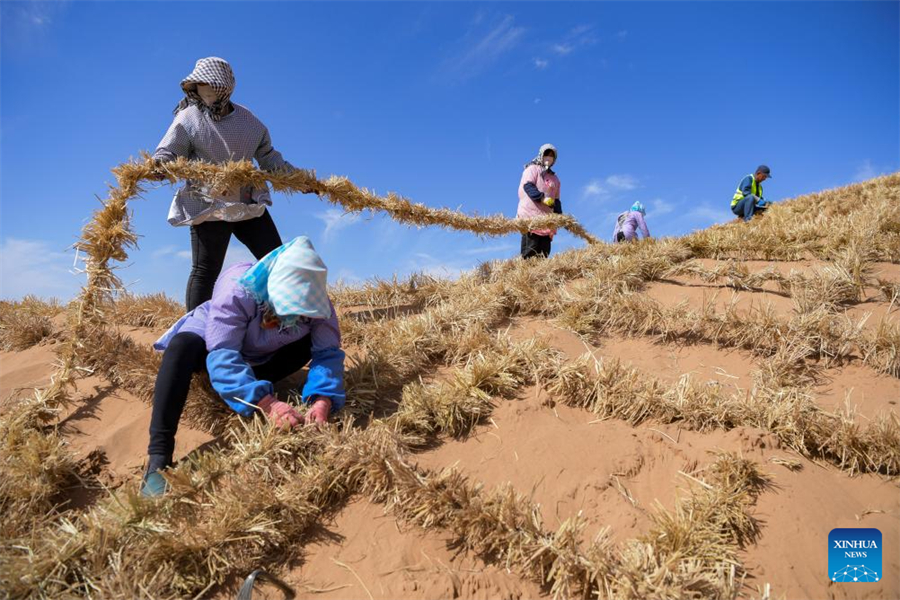
Workers pave straw checkerboards in the Tengger Desert, in Zhongwei of northwest China's Ningxia Hui Autonomous Region, May 30, 2024. [Xinhua/Feng Kaihua]
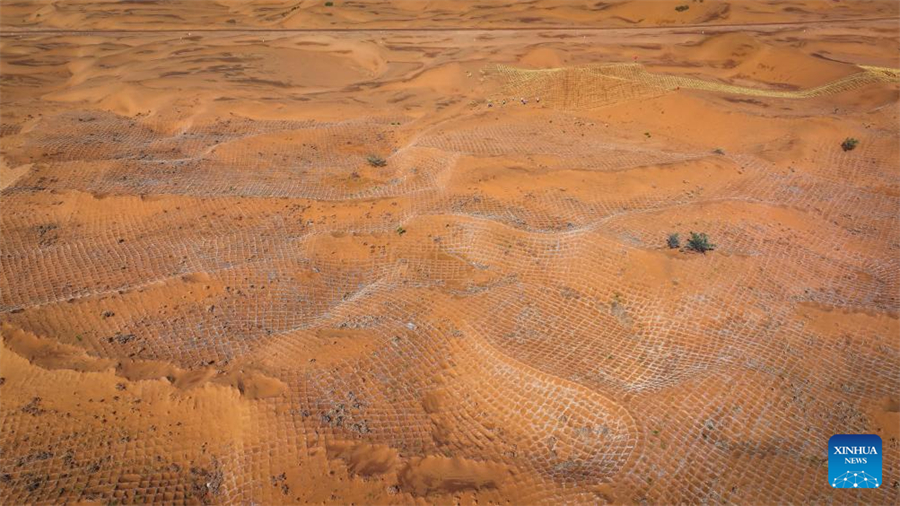
An aerial drone photo taken on May 30, 2024 shows workers paving straw checkerboards in the Tengger Desert, in Zhongwei of northwest China's Ningxia Hui Autonomous Region. [Xinhua/Feng Kaihua]
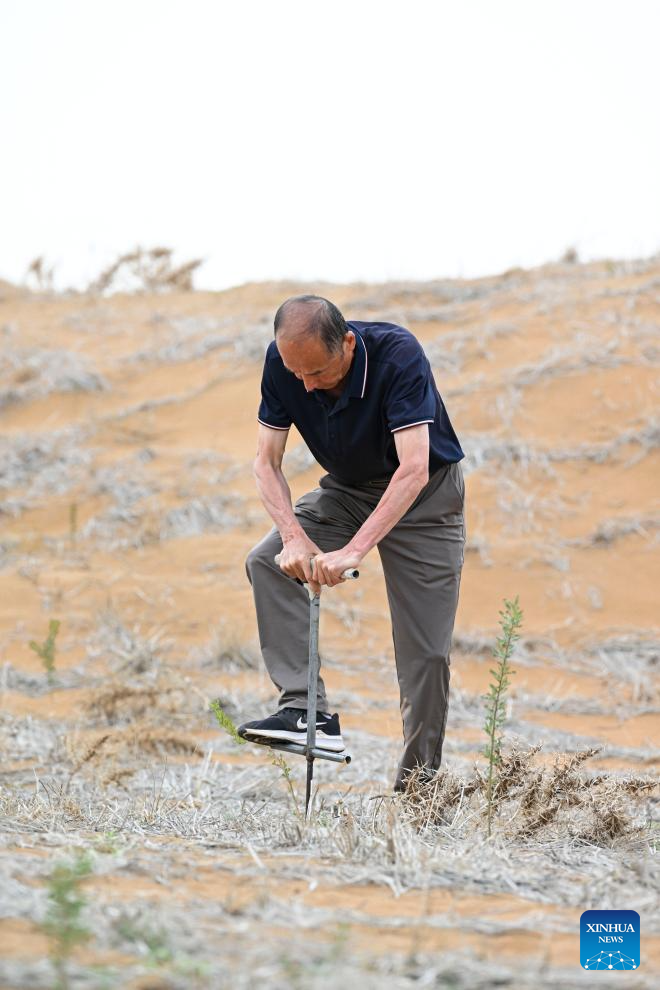
Tang Ximing, a senior engineer at a state-owned forestry farm in Zhongwei, demonstrates a precision seedling planter invented by himself in northwest China's Ningxia Hui Autonomous Region, June 1, 2024. [Xinhua/Feng Kaihua]
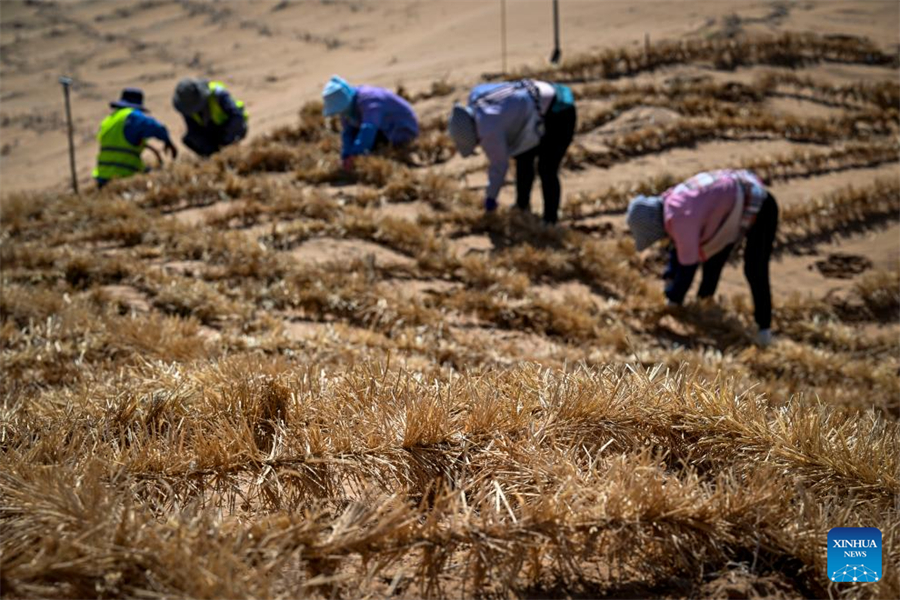
Workers pave straw checkerboards in the Tengger Desert, in Zhongwei of northwest China's Ningxia Hui Autonomous Region, May 30, 2024. [Xinhua/Feng Kaihua]
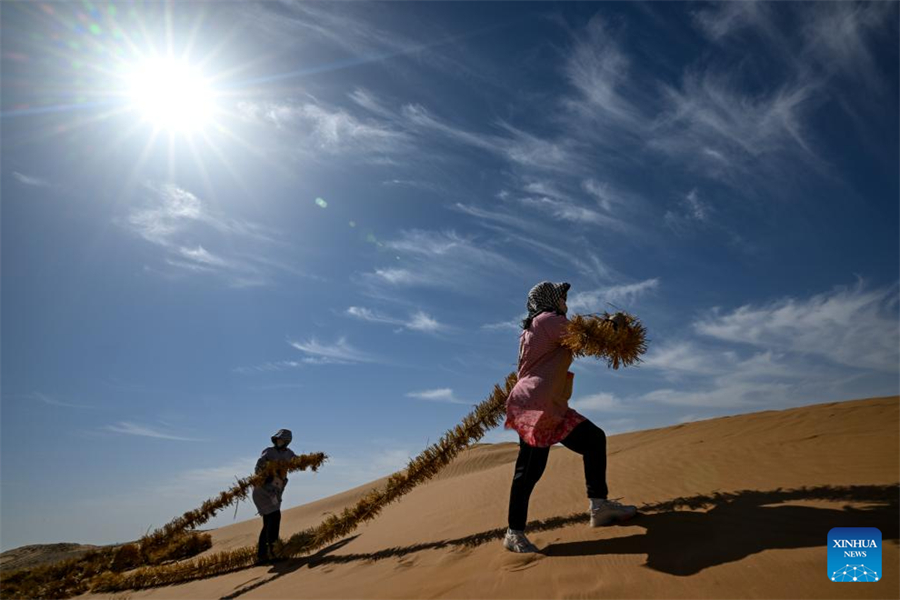
Workers pave straw checkerboards in the Tengger Desert, in Zhongwei of northwest China's Ningxia Hui Autonomous Region, May 30, 2024. [Xinhua/Feng Kaihua]
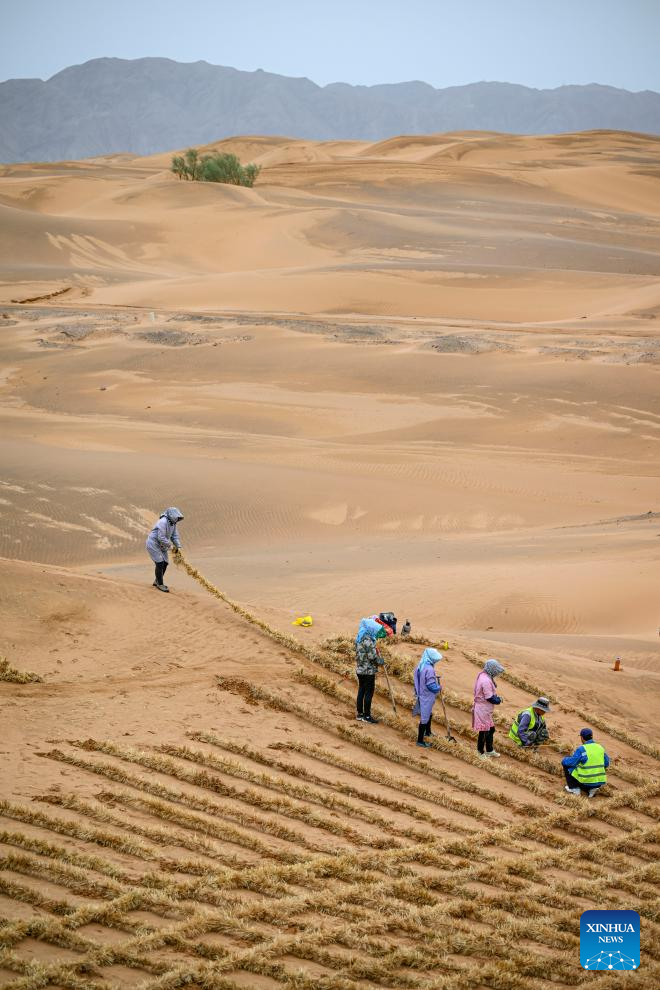
Workers pave straw checkerboards in the Tengger Desert, in Zhongwei of northwest China's Ningxia Hui Autonomous Region, May 29, 2024. [Xinhua/Feng Kaihua]
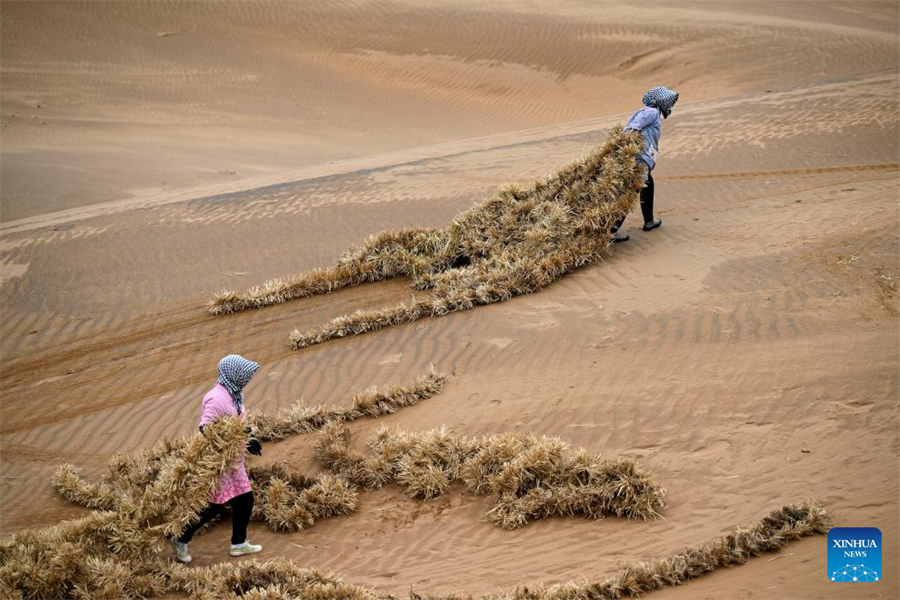
Workers carry straw checkerboards in the Tengger Desert, in Zhongwei of northwest China's Ningxia Hui Autonomous Region, May 30, 2024. [Xinhua/Feng Kaihua]
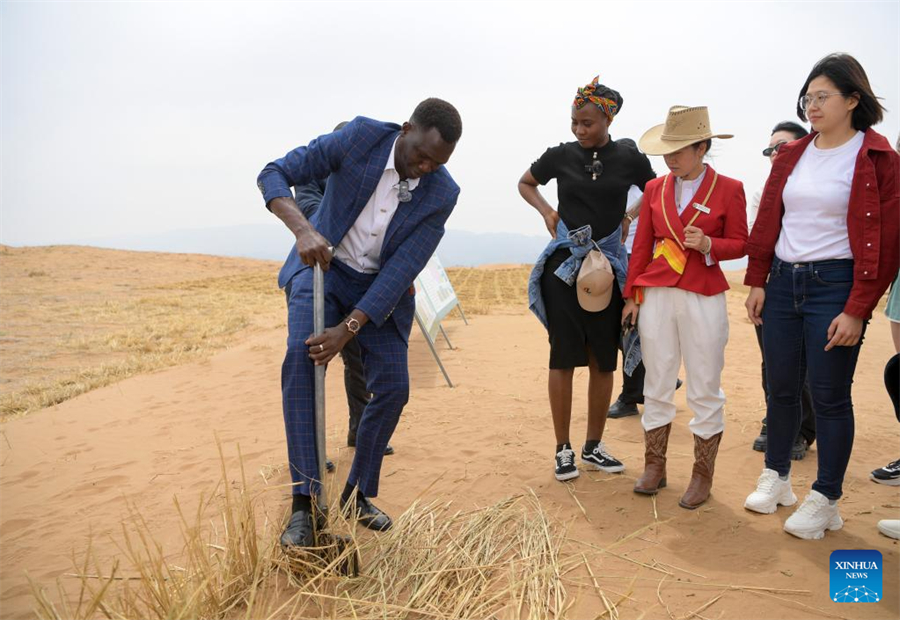
A Kenyan Ph.D. candidate (1st L) of Peking University tries to set up a part of the straw checkerboard in the Tengger Desert, northwest China's Ningxia Hui Autonomous Region, May 31, 2024. [Xinhua/Feng Kaihua]
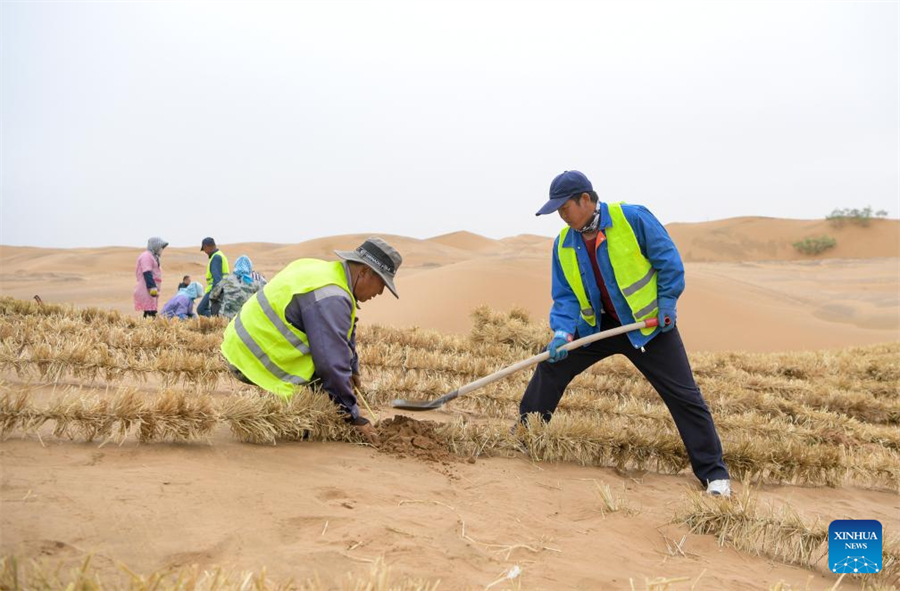
Workers pave straw checkerboards in Zhongwei, northwest China's Ningxia Hui Autonomous Region, May 29, 2024. [Xinhua/Feng Kaihua]
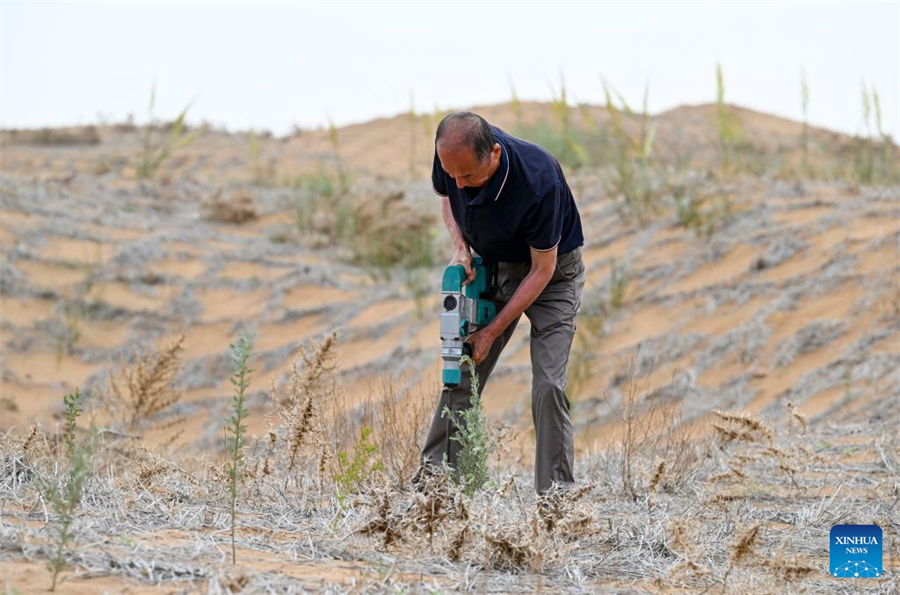
Tang Ximing, a senior engineer at a state-owned forestry farm in Zhongwei, demonstrates an upgraded electric seedling planter invented by himself in northwest China's Ningxia Hui Autonomous Region, June 1, 2024. [Xinhua/Feng Kaihua]
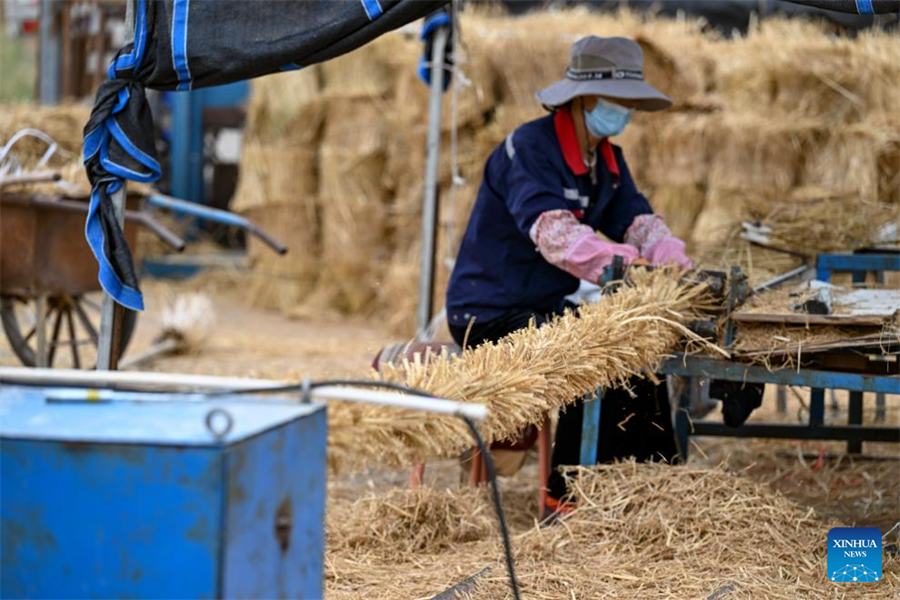
Workers produce straw checkerboard materials in Zhongwei of northwest China's Ningxia Hui Autonomous Region, May 29, 2024. [Xinhua/Feng Kaihua]
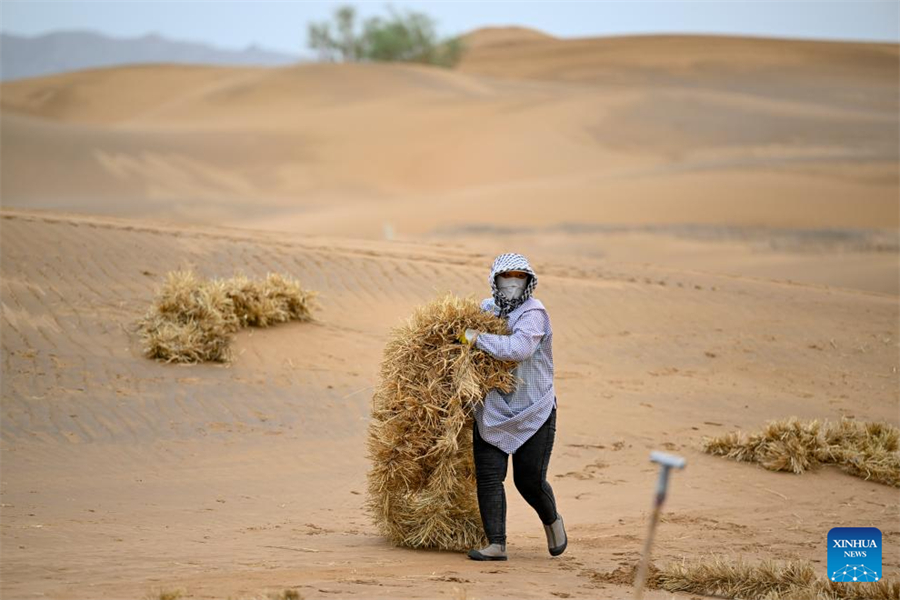
A worker paves straw checkerboards in the Tengger Desert, in Zhongwei of northwest China's Ningxia Hui Autonomous Region, May 30, 2024. [Xinhua/Feng Kaihua]
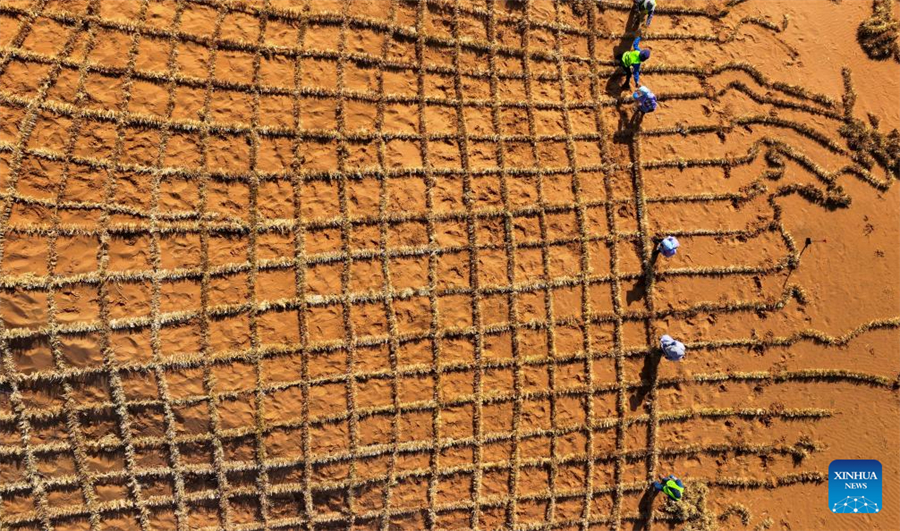
An aerial drone photo taken on May 30, 2024 shows workers paving straw checkerboards in the Tengger Desert, in Zhongwei of northwest China's Ningxia Hui Autonomous Region. [Xinhua/Feng Kaihua]
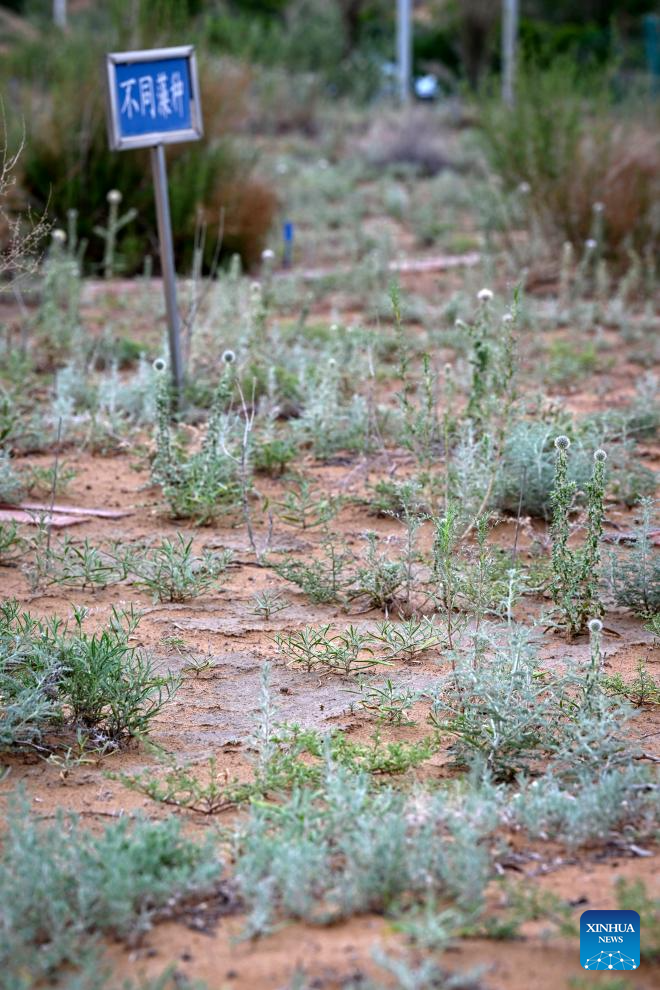
The cyanobacteria soil crust is seen at Shapotou Desert Research and Experiment Station (SDRES) of the Chinese Academy of Sciences (CAS), in northwest China's Ningxia Hui Autonomous Region, May 31, 2024. [Xinhua/Feng Kaihua]
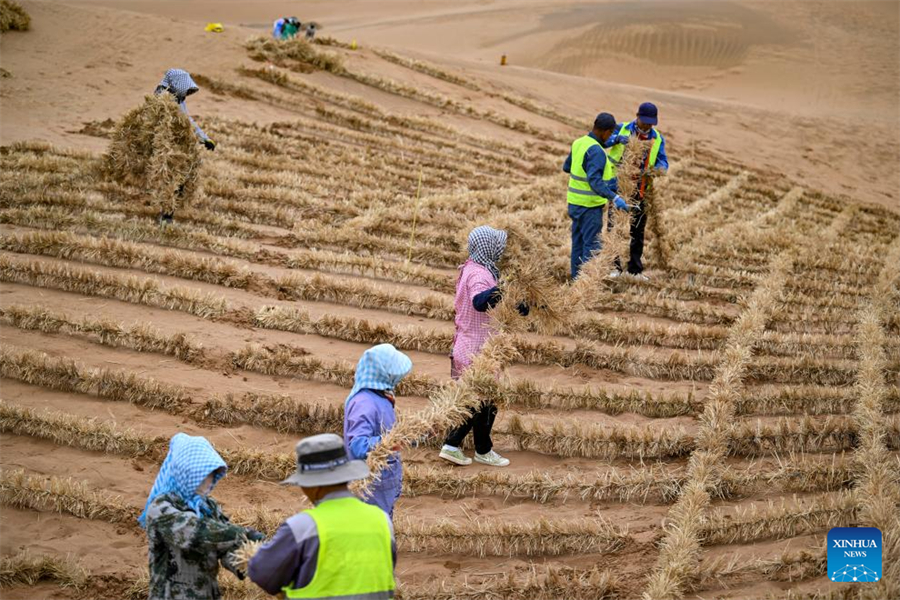
Workers pave straw checkerboards in the Tengger Desert, in Zhongwei of northwest China's Ningxia Hui Autonomous Region, May 29, 2024. [Xinhua/Feng Kaihua]
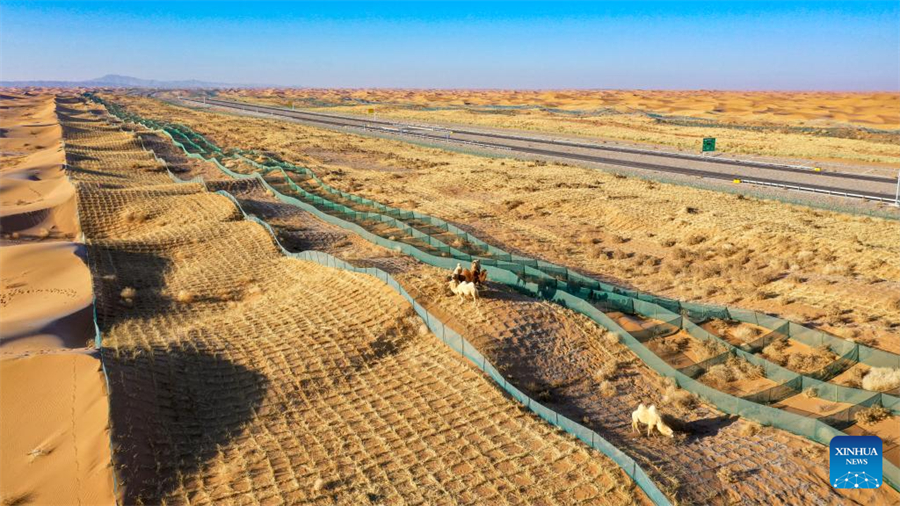
An aerial drone photo taken on Dec. 29, 2021 shows a section of an express way protected by straw checkerboards from the sand in the Tengger Desert, northwest China's Ningxia Hui Autonomous Region. [Xinhua/Feng Kaihua]
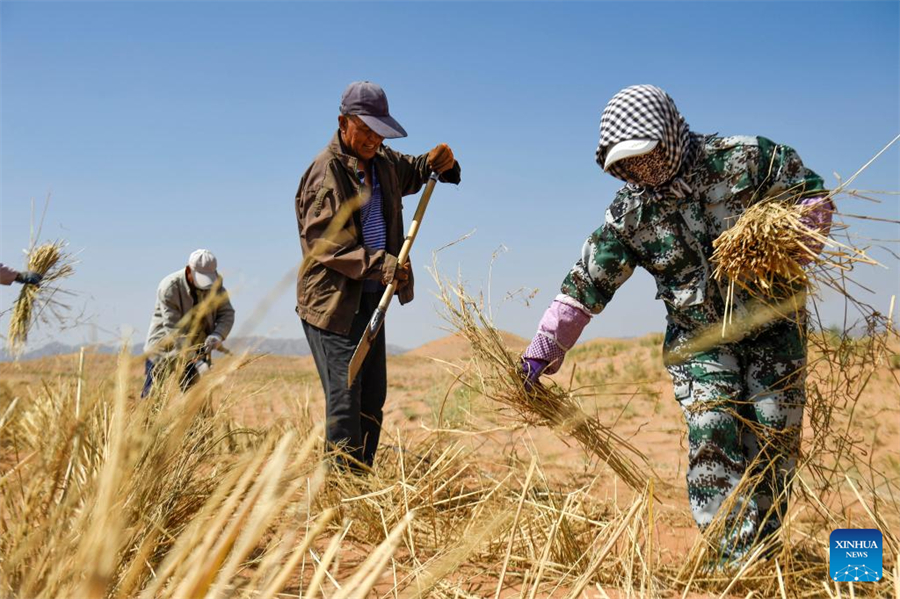
Workers set up straw checkerboards in Zhongwei, northwest China's Ningxia Hui Autonomous Region, June 13, 2019. [Xinhua/Feng Kaihua]
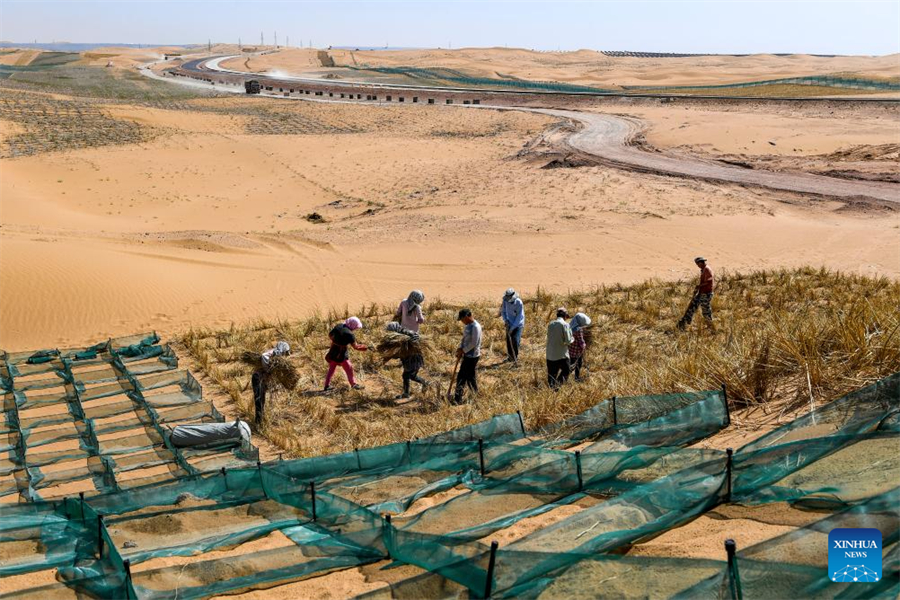
An aerial drone photo taken on Sept. 7, 2020 shows workers paving straw checkerboards near a section of an express way in the Tengger Desert, northwest China's Ningxia Hui Autonomous Region. [Xinhua/Feng Kaihua]
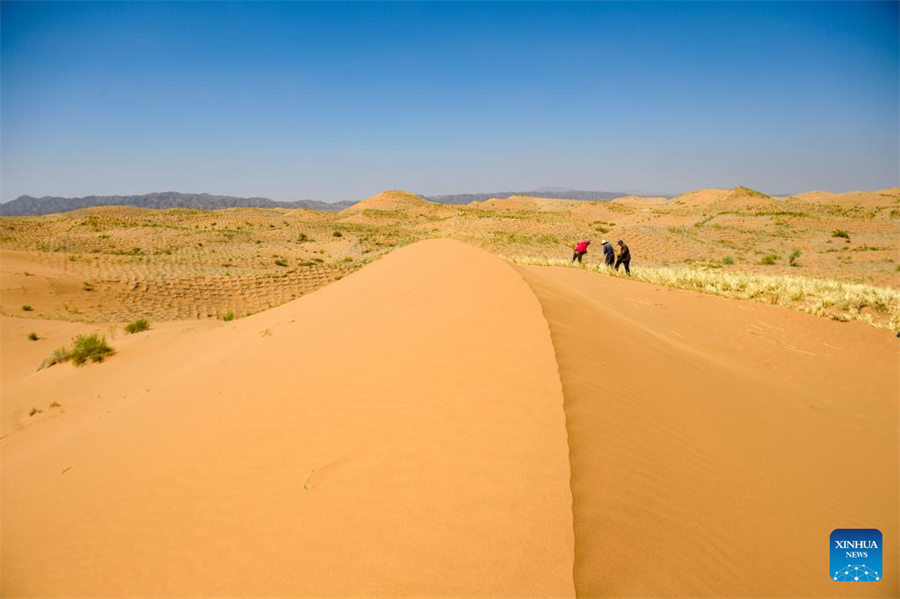
Workers set up straw checkerboards in Zhongwei, northwest China's Ningxia Hui Autonomous Region, June 13, 2019. [Xinhua/Feng Kaihua]
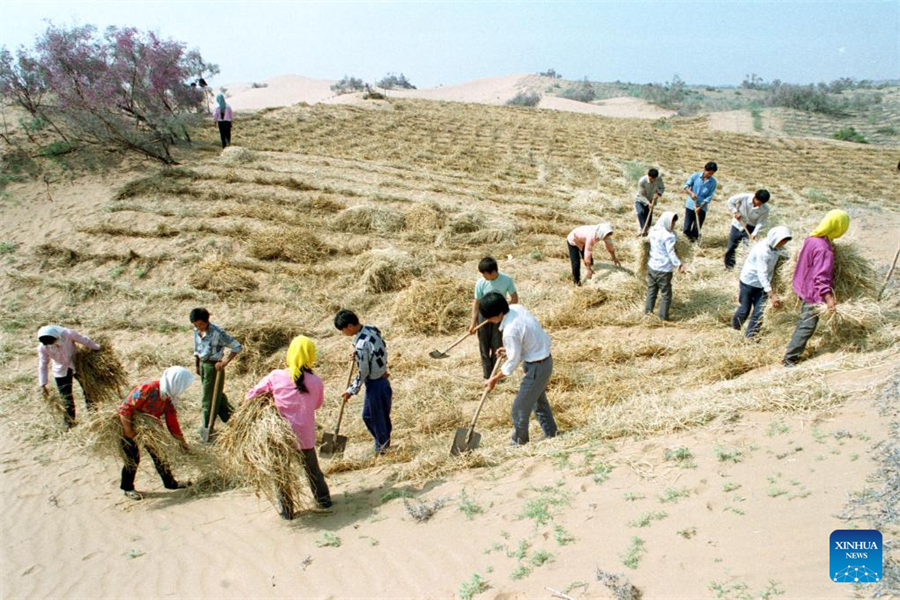
Workers set up straw checkerboards in Zhongwei, northwest China's Ningxia Hui Autonomous Region, Sept. 24, 1994. [Xinhua/Liu Haifeng]
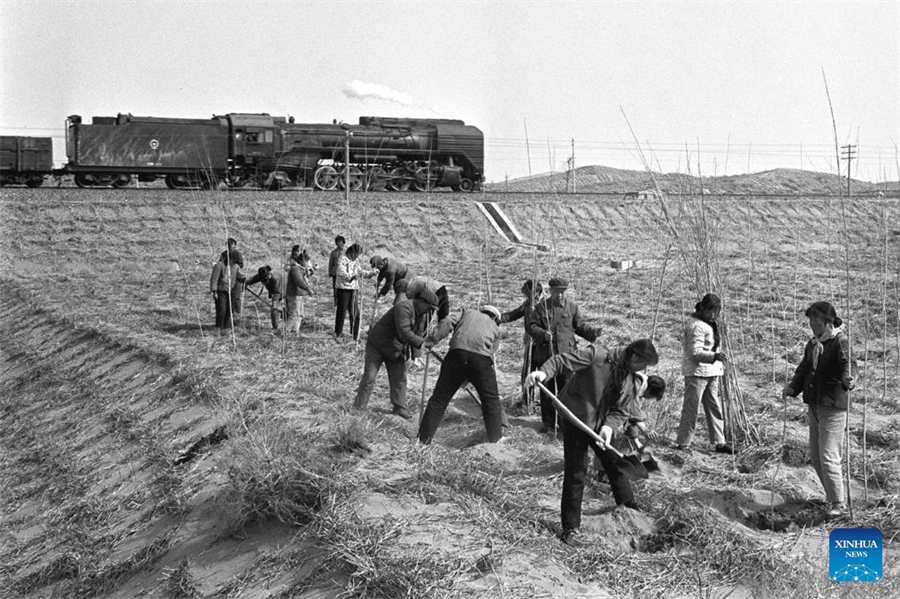
Workers plant trees in straw checkerboards to protect the Baotou-Lanzhou Railway from sand in Zhongwei, northwest China's Ningxia Hui Autonomous Region, April 25, 1979. [Xinhua/Chen Siyu]
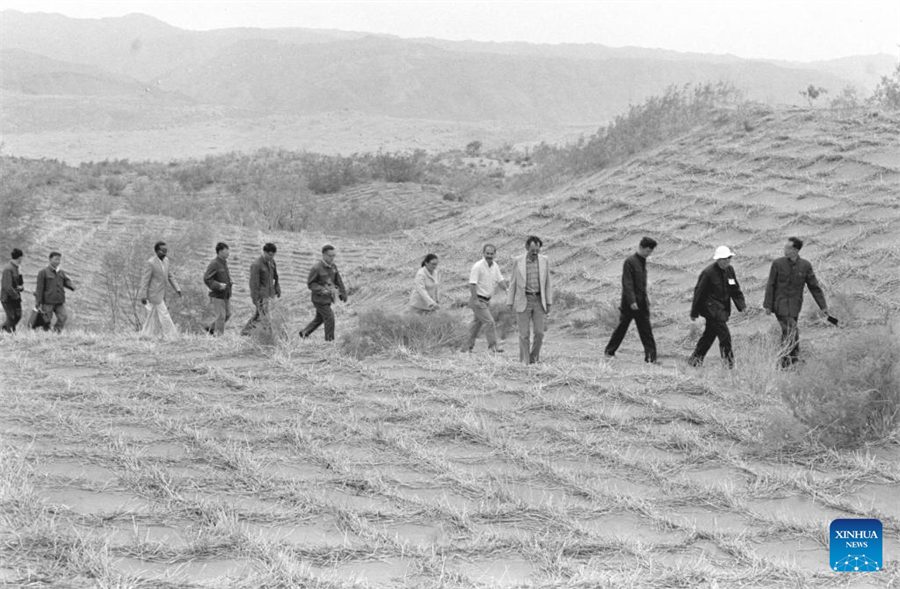
Organized by United Nations Environment Programme (UNEP), international delegates inspect straw checkerboards in Zhongwei, northwest China's Ningxia Hui Autonomous Region, Oct. 14, 1981. [Xinhua/Chen Siyu]
























